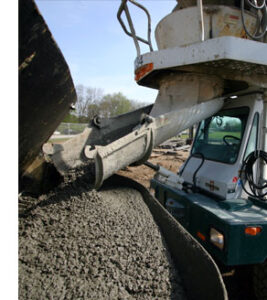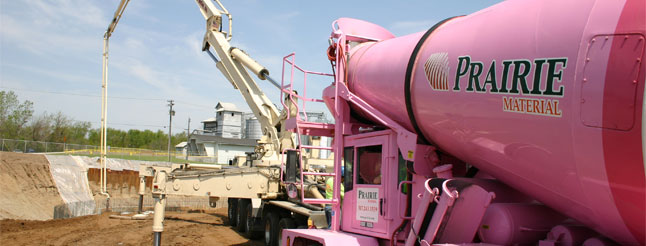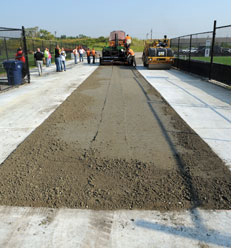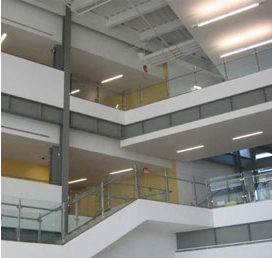Ground broke this January on Phase II of a new wastewater treatment plant that will solve multiple environmental problems for the city of Terre Haute, Indiana.
“We’ve heard for years about the smell at the existing plant,” Mayor Duke Bennett said in a recent interview with the Terre Haute Tribune-Star. The city’s outdated, open-air facility can’t handle heavy storm runoff, he added, sending untreated stormwater into the nearby Wabash River. “The new plant allows us to address both issues,” the mayor said.
This week, Plocher Construction of Highland, Illinois completed a 500-yard placement at the current plant site, the latest step in a near-total rebuild of the facility, says VP of Operations Chad Plocher.
Gearing up to meet job demands

The job includes construction of a new aeration tank, 2 new clarifiers, 4 new sludge storage tanks and rehabbing of existing tanks, Plocher says, along with new buildings to enclose all operations.
Prairie Material will provide all 35,000 yards needed to complete the $115 million project, delivering from its main yard in Terre Haute with a backup plant specially constructed to guarantee capacity.
In all, Plocher will place 12 slabs and more than 70 walls, with some foundation walls measuring 2 feet thick and 24 feet high. Individual pours of 400 to 600 yards will take place throughout the 2.5-year schedule.
Tests pinpoint the right mixes

Concrete used in water treatment plants must meet tough standards that guarantee long-term performance. “Engineering specs for 90% of the concrete in this job call for 4,500 psi with a water-cement ratio not to exceed 0.42 and shrinkage of less than .03%,” notes Prairie mix design expert Mark Chiluski.
More than half the concrete must also be waterproof, Chiluski notes, and to ensure workability, the contractor requested mixes delivering 8-inch slump.
Plocher also sought to control concrete costs by minimizing the amount of shrinkage-reducing additives in the mix. “SRAs definitely are a cost factor, so we worked hard to find the right solution,” Chiluski says.
Prairie tested 9 unique mixes in a 3-set matrix to achieve the ideal balance of shrinkage control while meeting waterproofing and slump requirements. Soon after work began, Plocher asked for mix tweaks to achieve faster set, finding the extra cost of mix enhancements would be offset by labor savings.
New partnership, great results
With more than 10% of Phase II now completed, Chad Plocher says his company is impressed with Prairie’s performance.
“We’ve built water treatment plants throughout southern Illinois, but this project is the farthest east we’ve taken on — and the first time we’ve worked in Prairie’s service area,” he says. “They’ve developed a good working partnership with us. We laid out what we needed and they worked with us every step of the way to deliver.”
Scheduled for completion in 2015, the new plant will process up to 48 million gallons of wastewater per day, twice the current plant’s capacity. And with all operations indoors, Terre Haute residents will enjoy fresher air, too. “All of us at Prairie feel good about our role in a project that helps protect local water supplies and the environment,” says Indiana Territory Manager Doug Dalton.






 United Materials
United Materials Superior Materials
Superior Materials Prairie Materials
Prairie Materials Canada Building Materials
Canada Building Materials VC Global
VC Global